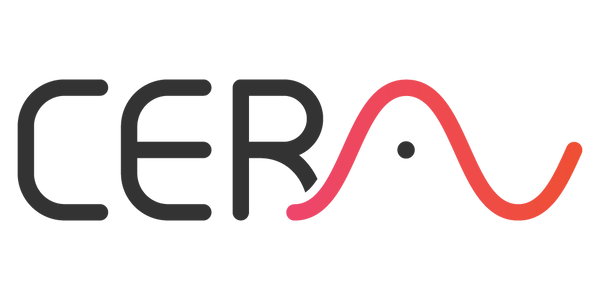
The Hidden Link Between Vascular Health and the Gut-Brain Connection
CeraThrive LLCThe Overlooked Factor in Gut-Brain Health

Your gut and brain are in constant communication, but did you know that your vascular system plays a crucial role in this connection? Healthy blood vessels ensure efficient circulation, delivering oxygen and nutrients while removing waste from both your gut and brain. When vascular health declines, it can lead to poor digestion, brain fog, inflammation, and even neurodegenerative conditions.
The good news? You can take control of your vascular health today. This article explores the science behind vascular health, its impact on the gut-brain axis, and how cutting-edge strategies like red light therapy can help optimize circulation and cognitive function.
Why Vascular Health Is Essential for the Gut-Brain Axis

Your vascular system consists of arteries, veins, and capillaries responsible for moving blood throughout your body. When these blood vessels are compromised—whether through stiffness, inflammation, or poor circulation—oxygen and essential nutrients struggle to reach the brain and gut.
Impact of the Gut-Brain Axis on Cardiovascular Disease
The Consequences of Poor Circulation on the Gut-Brain Axis
- Reduced Oxygen to the Brain → Brain fog, fatigue, and cognitive decline
- Impaired Gut Function → Sluggish digestion, bloating, and poor nutrient absorption
- Increased Inflammation → Higher risk of chronic conditions like IBS, anxiety, and neurodegenerative diseases
By improving vascular health, you’re not just supporting heart function—you’re strengthening the entire gut-brain communication network.
6 Ways to Support Vascular Health for Optimal Gut-Brain Function

1. Move More to Enhance Blood Flow
Regular exercise keeps blood vessels flexible and promotes circulation. A vascular-friendly routine should include:
- 150 minutes of moderate activity per week (brisk walking, swimming, cycling)
- Strength training to improve blood vessel elasticity
- Stretching and yoga to support circulation and nervous system balance
2. Eat for Gut & Vascular Resilience
A diet that supports both gut and vascular health includes:
- Healthy Fats → Omega-3s from fish and flaxseeds reduce inflammation
- Polyphenol-Rich Foods → Berries, dark chocolate, and olive oil improve circulation
- Fermented Foods → Kefir, sauerkraut, and kimchi enhance gut microbiome balance
- Magnesium & Nitric Oxide Boosters → Leafy greens, beets, and nuts support blood vessel relaxation
3. Support Microcirculation with Red Light Therapy
Emerging research shows red light therapy enhances blood circulation, which is essential for gut-brain communication. By stimulating nitric oxide production and reducing oxidative stress, red light therapy helps:
- Improve oxygen and nutrient delivery to the brain and gut
- Reduce gut inflammation and promote healing
- Support cognitive clarity and neuroprotection
CERAThrive’s red light therapy systems are designed to enhance circulation and gut-brain health through targeted photobiomodulation.
Explore CeraThrive’s Red Light Therapy Solution - the CERA System.
4. Manage Stress & Improve Sleep
Chronic stress and poor sleep disrupt vascular health, increasing the risk of poor circulation and inflammation. To counteract this:
- Practice meditation and breathwork to regulate the nervous system
- Get 7–9 hours of quality sleep to support vascular repair
- Spend time in natural sunlight to balance circadian rhythms
5. Maintain a Healthy Weight & Blood Sugar Balance
Excess weight and insulin resistance put strain on blood vessels, reducing circulation to the gut and brain. Studies show that losing just 5-10% of body weight significantly improves vascular flexibility and cognitive function.
6. Avoid Smoking & Limit Alcohol
- Smoking constricts blood vessels, impairing circulation to both the gut and brain
- Excess alcohol weakens arteries and disrupts gut microbiome balance
Cutting out smoking and reducing alcohol intake can rapidly improve microcirculation and gut-brain resilience.
FAQs: Vascular Health & the Gut-Brain Axis
Q1: How does vascular health affect digestion?
Healthy blood flow ensures proper nutrient absorption and gut motility, while poor circulation can slow digestion and increase inflammation.
Q2: Can poor circulation contribute to brain fog?
Yes—reduced oxygen and nutrient supply to the brain can lead to cognitive decline, fatigue, and memory issues.
Q3: How quickly can I improve vascular health?
Studies show lifestyle changes like exercise and red light therapy can enhance circulation within weeks.
Q4: Does red light therapy support both gut and brain function?
Yes. By stimulating microcirculation, red light therapy optimizes nutrient delivery to the gut and brain, improving digestion and cognition.
Final Thoughts: Strengthen Your Gut-Brain Axis Through Vascular Health
Your vascular system is the lifeline between your gut and brain. By optimizing circulation through movement, diet, stress management, and red light therapy, you can unlock better digestion, sharper thinking, and long-term wellbeing.
Ready to take control of your gut-brain health? Learn how CeraThrive’s red light therapy system can enhance your vascular system and fuel your performance.
Discover CeraThrive and Rebel Scientist Podcast
